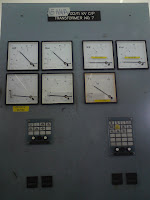I read the Distribution Planning Guideline Handbook. One of the topic is about MV Network Configuration. The MV Distribution Network in TNB operates at voltages of 6.6, 11, 22 and 33 kV
and interlinks the transmission system and the LV distribution system.
TYPE OF NETWORK CONFIGURATION
There are three basic network configurations that are commonly in use are;
(a) the radial circuit,
(b) the mesh circuit, and
(c) the loop circuit.

Performance of some common network configuration with respect to several different sets of characteristics as listed below:-
• Construction characteristic
• Operation characteristic
• Maintenance characteristic
The salient features of the various network configurations under consideration are
as follows:-
• Radial circuit
• Mesh circuit
• Loop circuit from same ppu/pmu
• Loop circuit from different ppu/pmu
• Loop via switching station (n+1 grouping)
• Petal configuration
• Bulk supply interconnector configuration
Today, my focus suggested by my supervisor is the Petal Configuration.
• The “petal configuration” is one method to improve reliability and security of supply.
• The “petal configuration is developed by interconnecting a loop circuit form one PPU/PMU to a loop circuit from another PPU/PMU via a switching station or the bus-section of a normal substation.
• Individual cable loops are operated in a “close loop” arrangement with 50% loading level.
• All circuit breaker substations are installed with unit protection for cable and SCADA supervisory system for remote switching
• An off-point is maintained at the switching station or bus-section.
The main advantages of this network configuration are:-
• No supply interruption due to single cable fault outage
• Full feedback even if one of the PPU/PMU outage
• SCADA system to detect cable fault and perform remote switching
The disadvantage of this network configuration is:-
• the inherent high cost of installing SCADA system and circuit breaker substations.


















































